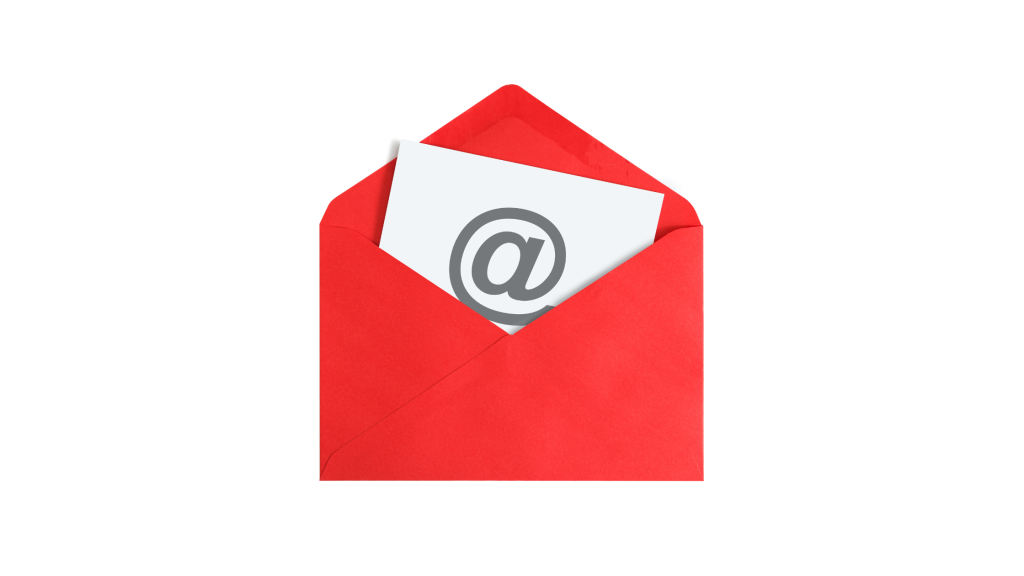In the swiftly evolving world of B2B networking, cold emailing remains a cornerstone technique, adeptly bridging the gap between potential partnerships and fostering new business opportunities. As Isabella Robertson, with extensive experience in digital marketing, I’ve witnessed the transformative power of well-crafted cold emails firsthand. According to the “Cisco’s Global Business Networking Report 2025,” businesses employing strategic cold email practices have seen a notable increase in networking success rates, underlining the method’s enduring relevance and efficacy.
Introduction to the Future of B2B Networking
The landscape of B2B networking is continuously shifting, propelled by advancements in technology and changing professional dynamics. Cold emailing, a time-tested tool in this domain, has evolved significantly, offering nuanced and sophisticated strategies for engaging potential business contacts. This evolution is not merely about keeping pace with digital trends but about leveraging them to forge more meaningful, productive connections. With research indicating a 30% increase in B2B partnerships initiated through cold emails, the message is clear: mastering modern cold email techniques is indispensable for future-focused businesses aiming to expand their networks and drive growth.
The Role of Personalization in Cold Emails
The digital era has ushered in an age of personalization, transforming it from a nice-to-have into a non-negotiable aspect of B2B communications. The reason? In a sea of generic outreach attempts, personalized emails stand out, resonating with recipients on a level that generic messages cannot match. Personalization in cold emailing goes beyond the superficial insertion of a name or company; it’s about tailoring the message to reflect a deep understanding of the recipient’s needs, challenges, and business context.
Achieving this level of personalization begins with thorough research. Before drafting a cold email, I invest time in understanding the recipient’s business model, recent achievements, and industry trends affecting their operations. This groundwork enables me to craft messages that speak directly to their specific situation, making each email not just a pitch, but a conversation starter. By demonstrating genuine interest and offering relevant insights or solutions, personalized cold emails can significantly improve your response rates, laying the groundwork for fruitful B2B relationships.
Crafting Impactful Subject Lines
In the digital age, where inboxes are inundated with unopened emails, the subject line of your cold email is your first and possibly only shot at making an impression. It’s the beacon that can either draw recipients towards your message or see it lost in the digital abyss. The crafting of subject lines, therefore, is a delicate art that balances curiosity, relevance, and brevity to compel a click-through.
An impactful subject line should pique interest while clearly indicating the value of the email content. For instance, “Unlocking New B2B Strategies: Your Invitation” combines intrigue with a promise of value, suggesting a personalized offer or insight awaits the recipient. It’s crucial to avoid generic phrases that might trigger spam filters or, worse, indifference. Testing various approaches, such as posing a question or indicating the inclusion of fresh industry data, can help identify what resonates best with your target audience. Remember, the goal is to make your email the one they can’t wait to open.
Moreover, leveraging personalization even at this early stage—without overdoing it—can significantly increase open rates. A subject line that hints at understanding the recipient’s specific challenges or achievements can set the stage for a more engaging email content. The key lies in crafting a subject line that feels tailor-made for the recipient, compelling them to delve into what you have to say.
The Anatomy of a Successful Cold Email
The structure of your cold email plays a pivotal role in not just capturing but sustaining the recipient’s interest. A successful cold email is akin to a well-told story; it has a clear beginning, middle, and end, each part seamlessly leading the reader towards a desired action. Let’s dissect this structure for a better understanding:
Beginning (Greeting and Introduction):
Your email should start with a personalized greeting, using the recipient’s name to create an immediate connection. Follow this with a brief introduction that positions you as a relevant and credible sender. This might include mentioning a mutual connection, a recent event, or a piece of content they published. The aim here is to quickly establish why you’re reaching out and why they should care.
Middle (Value Proposition):
This section is the heart of your email, where you present your value proposition. Clearly articulate how your product, service, or proposition aligns with the recipient’s needs or challenges. Use concise language to outline the benefits, avoiding industry jargon that might cloud your message. It’s also beneficial to reference specific examples or results that underscore your credibility and the potential impact of your offering.
End (Call-to-Action):
Conclude your email with a clear, compelling call-to-action (CTA) that guides the recipient on what to do next. Whether it’s scheduling a call, signing up for a webinar, or simply replying to your email, your CTA should be straightforward and easy to follow. Avoid ambiguity; the recipient should have no doubts about how to proceed if your message resonates with them.
Crafting a successful cold email is not just about following a formula; it’s about creating a connection. Each element of your email, from the subject line to the CTA, should be carefully considered and tailored to the recipient’s interests and needs. By adopting this approach, you not only increase the likelihood of your email being read but also set the stage for meaningful B2B relationships built on mutual relevance and respect.
Strategic Follow-up for B2B Networking
Following up is an art in itself within the realm of B2B cold emailing. A well-timed, thoughtfully crafted follow-up can be the nudge that turns a silent inbox into a budding business relationship. However, there’s a fine line between being persistent and becoming pesky. The key to successful follow-up emails lies in their strategic planning and execution, ensuring they add value with every interaction.
A rule of thumb for follow-ups is to wait for about a week after your initial email. This gives the recipient ample time to go through their messages and respond to pressing matters. When drafting your follow-up, reference your original email briefly and proceed to offer additional value. This could be in the form of a recent industry report, an insightful article related to their business challenges, or an invitation to a relevant event. The objective is to reinforce the relevance of your message and demonstrate your commitment to providing actionable solutions.
Equally important is to keep your follow-up emails concise and to the point. Reiterate your call to action clearly, making it easy for the recipient to take the next step. Remember, each follow-up is an opportunity to deepen the connection, showcasing your persistence and dedication to establishing a meaningful dialogue. By strategically planning your follow-ups and focusing on delivering value, you enhance your chances of breaking through the noise and securing a place in your recipient’s consideration set.
Measuring the Success of Your Cold Email Campaigns
In the continuously evolving landscape of B2B marketing, the ability to measure and adapt your strategies is crucial. This principle applies unequivocally to cold emailing. Understanding the impact of your cold email campaigns allows you to refine your approach, enhancing both efficiency and effectiveness over time. Key performance indicators (KPIs) such as open rates, click-through rates, response rates, and conversion rates offer invaluable insights into how your emails are resonating with your audience.
Utilizing email analytics tools can provide a wealth of data, from identifying which subjects lines garner the most opens to understanding the best times to send your emails for maximum engagement. Such insights are instrumental in tailoring your campaigns to better meet the needs and preferences of your target audience. For instance, if you notice a particular type of subject line consistently yields higher open rates, you can incorporate similar elements into future campaigns.
Moreover, A/B testing plays a pivotal role in optimizing your cold email strategies. By systematically testing different elements of your emails, from the subject line to the call to action, you can discern what most effectively prompts your target audience to engage. This iterative process of testing, measuring, and refining is key to building a cold email strategy that not only reaches your audience but compels them to act.
In the dynamic world of B2B networking, the ability to measure and adapt your cold email strategies is not just advantageous—it’s essential. By closely monitoring the success of your campaigns and being willing to pivot based on the data, you set the stage for sustained success and continuous improvement in your B2B networking efforts.
Beyond Cold Emailing: Building Long-Term B2B Relationships
While cold emailing serves as a crucial entry point into the realm of B2B networking, the ultimate goal transcends the initial connection. The essence of B2B success lies in nurturing these connections into long-term, mutually beneficial relationships. It’s about evolving from a one-time email interaction to a continuous dialogue that fosters trust, respect, and collaboration.
To achieve this, it’s imperative to view each cold email not as an isolated transaction but as the beginning of a conversation. After breaking the ice, the focus should shift to providing ongoing value. This could involve sharing industry insights, offering helpful resources, or simply checking in periodically without an immediate business agenda. The aim is to remain present and relevant, demonstrating a genuine interest in their success beyond your initial offer or request.
Engagement tools and CRM platforms can be invaluable in managing these relationships, allowing you to keep track of interactions, preferences, and key milestones. Personalizing your communication based on this information can deepen the connection, showing that you value the relationship. Remember, in the B2B world, trust is currency; by investing in these relationships, you’re not just building a network but cultivating a community of advocates and partners.
Elevate Your Cold Mail Strategy
As we navigate the future of B2B networking, cold emailing emerges not only as a tactic but as a skill—a blend of art and science that opens doors to new opportunities. Embracing the strategies discussed, from crafting impactful subject lines to measuring the success of your campaigns, can elevate your cold emailing efforts, transforming potential contacts into valuable business relationships.
In this digital age, where personal connection is both challenged and cherished, mastering the art of cold emailing is more than a marketing strategy; it’s a means to build genuine, lasting connections in the professional world. As we look ahead, let’s not underestimate the power of a well-crafted email to bridge distances and bring businesses together.
If you’re ready to take your B2B networking to the next level, or if you seek guidance in crafting cold emails that resonate and convert, reach out to us at The Cold Email Agency. Our team is dedicated to helping you navigate the complexities of digital communication, ensuring your messages not only reach their destination but also leave a lasting impact. Together, let’s unlock the full potential of your B2B networking strategies.


